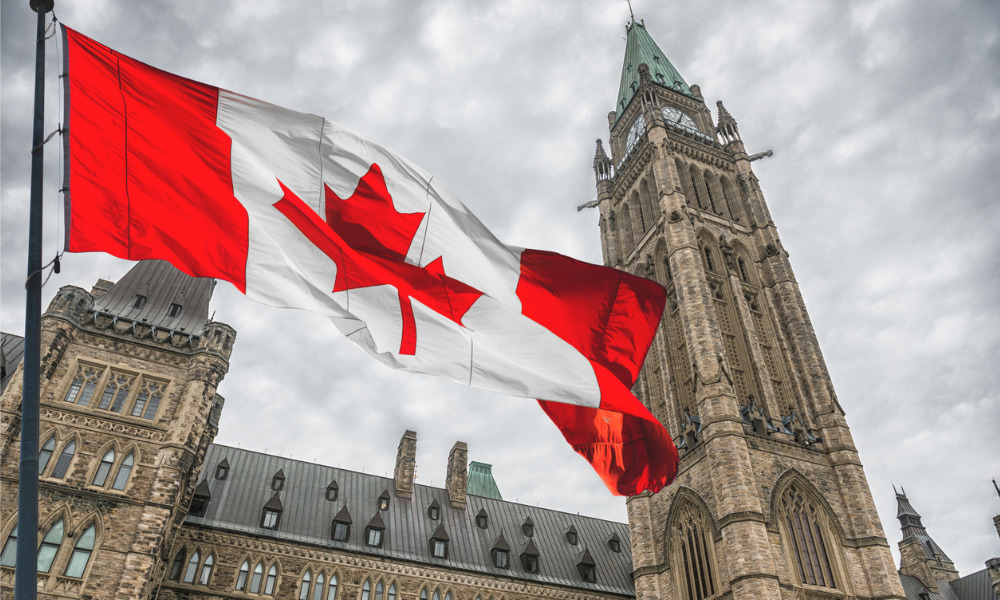The federal government has continued to propel the energy transition in the last two years, according to lawyers assisting the natural resources sector on environmental regulation.
In June, the Canadian Environmental Protection Act (CEPA) received its first refurbishing in over 20 years. In the preamble to Bill S-5, Strengthening Environmental Protection for a Healthier Canada Act, the legislation says it “recognizes a right to a healthy environment as provided under CEPA.”
 While this recognition does not yet come with specific legal or regulatory requirements, environmental lawyer Myriam Fortin says it is sure to form the basis for regulations addressing climate change, greenhouse gas emissions, and the environmental impacts of industrial projects, generally. “It will affect all industry sectors, including energy,” she says. Fortin is counsel in Stikeman Elliott LLP’s environment and energy groups and head of the firm’s environmental practice in Montreal.
While this recognition does not yet come with specific legal or regulatory requirements, environmental lawyer Myriam Fortin says it is sure to form the basis for regulations addressing climate change, greenhouse gas emissions, and the environmental impacts of industrial projects, generally. “It will affect all industry sectors, including energy,” she says. Fortin is counsel in Stikeman Elliott LLP’s environment and energy groups and head of the firm’s environmental practice in Montreal.
Under the amendments, the federal government is required before June 2025 to develop an implementation framework to determine how the right to a healthy environment will be considered under CEPA’s administration. In addition to translating into legislative requirements, the right to a healthy environment will form the basis for future claims advancing environmental rights that have previously been founded, generally, on s. 7 of the Charter’s right to life, liberty, and security of the person. Fortin says arguments based on s. 7 are often rejected.
“With that new right encroached in the Act, I expect there will be more claims, which is also interesting from a developer's perspective because there’s always that risk of third-party claims… even for projects that are already in operation.”
 Deirdre Sheehan, the Calgary-based co-chair of Osler Hoskin & Harcourt LLP’s regulatory, Indigenous, and environmental group, says the impact of recognizing a right to a healthy environment is still uncertain.
Deirdre Sheehan, the Calgary-based co-chair of Osler Hoskin & Harcourt LLP’s regulatory, Indigenous, and environmental group, says the impact of recognizing a right to a healthy environment is still uncertain.
She notes that the amendments subject the right to reasonable limits. The Act’s preamble also lays out a purpose without specifying an enforcement mechanism and leaving significant discretion to the federal executive. The forthcoming implementation framework will set out the research and monitoring activities and the social, health, scientific, and economic factors the government will consider when interpreting this right and what its reasonable limits are, she says.
“It introduces a concept, but how that’s actually going to play out is not clear,” she says.
Sheehan says the federal government is increasingly leveraging CEPA to introduce environmental regulation in the energy space. A primary area of focus for the energy industry is the “continued regulation under the auspices of the energy transition,” she says.
Ottawa’s new Clean Fuel Regulations came into effect on Canada Day. Through the regulations, the federal government aims to cut the carbon intensity of gasoline and diesel transportation fuel to 15 percent below 2016 levels by 2030.
Still in the early stages, clients are currently grappling with how to meet the carbon intensity limits, working through the obligations, and generating and purchasing compliance credits, says Sheehan.
On Aug. 10, the federal government released a draft of its new Clean Electricity Regulations for public comment. The regulations are part of Ottawa’s plan to have a net-zero electricity grid by 2035, will be registered under CEPA, and are supposed to come into force in 2025.
Provinces such as Alberta and Saskatchewan are coming out in opposition to the federal government’s initiative, says Sheehan. While Quebec and BC rely heavily on hydroelectric power and Ontario has a significant nuclear component in addition to its hydro capacity, she says that fossil fuels generate much electricity in the two western provinces.
On Aug. 3, after Lexpert conducted the interviews for this article, Alberta’s United Conservative government announced that the province’s utilities commission would pause all approvals for large renewable energy projects for six months. The moratorium will impact all solar and wind projects greater than one megawatt, and the province said it was responding to concerns about the development’s impact on agricultural land, reclamation, and the reliability of the power source.
In the background of the federal government’s legislative amendments and regulatory initiatives is the Canadian Net-Zero Emissions Accountability Act, which became law in 2021. The Act enshrined the Government of Canada’s commitment to reach net-zero greenhouse gas emissions by 2050.
 Michael Barbero, a partner at McLennan Ross LLP in Calgary, says that, from a regulatory standpoint, the energy transition raises a significant question: who will pay for it?
Michael Barbero, a partner at McLennan Ross LLP in Calgary, says that, from a regulatory standpoint, the energy transition raises a significant question: who will pay for it?
“We have an energy transition. That’s fantastic. It’s going to be expensive,” he says. Barbero’s practice includes providing regulatory and litigation assistance to the energy sector. He acts for oil and gas companies, power generation facility owners and operators, and other types of clients.
Alberta recently had the province’s utilities commission execute an inquiry into blending hydrogen into natural gas. Hydrogen is an alternative fuel source which can lower the natural gas’s greenhouse gas emissions profile. In June 2020, the commission released its report, advising the province that the cost of hydrogen blending is high enough that the government should consider tax credits, tax rebates, or subsidies to ease the financial pressure on ratepayers. Without financial help, the benefits of emission reductions and carbon tax savings may not outweigh the burden on ratepayers, the commission said.
The energy transition requires considering whether to apply the “old way of thinking” – that a utility can only recover prudently incurred costs – or to adopt a new perspective on funding, which includes a combination of tax credits, rebates, and subsidies, says Barbero.
“What you need to see is the proper balancing of private investment, coupled with prudent government spending to ensure that the energy transition is properly funded across multiple constituents.” Otherwise, if a gas company is expected to take on all the risk of transitioning to cleaner fuel, there may not be many willing to take that on, he says.
 Sean Parker, an Edmonton-based partner at McLennan Ross, says tension between Alberta and the federal government on emissions targets and energy-sector regulation, generally, has marked his practice in the last few years.
Sean Parker, an Edmonton-based partner at McLennan Ross, says tension between Alberta and the federal government on emissions targets and energy-sector regulation, generally, has marked his practice in the last few years.
“It’s not necessarily new, but it continues to develop,” says Parker, co-chair of McLennan Ross’s environmental and energy practice group. He also sees the tension demonstrated in the different ways the federal regulators are taking enforcement steps against companies in the oil sands. With the recent re-election of the United Conservative government, who are “fans of the energy sector,” he says that tension will continue.





